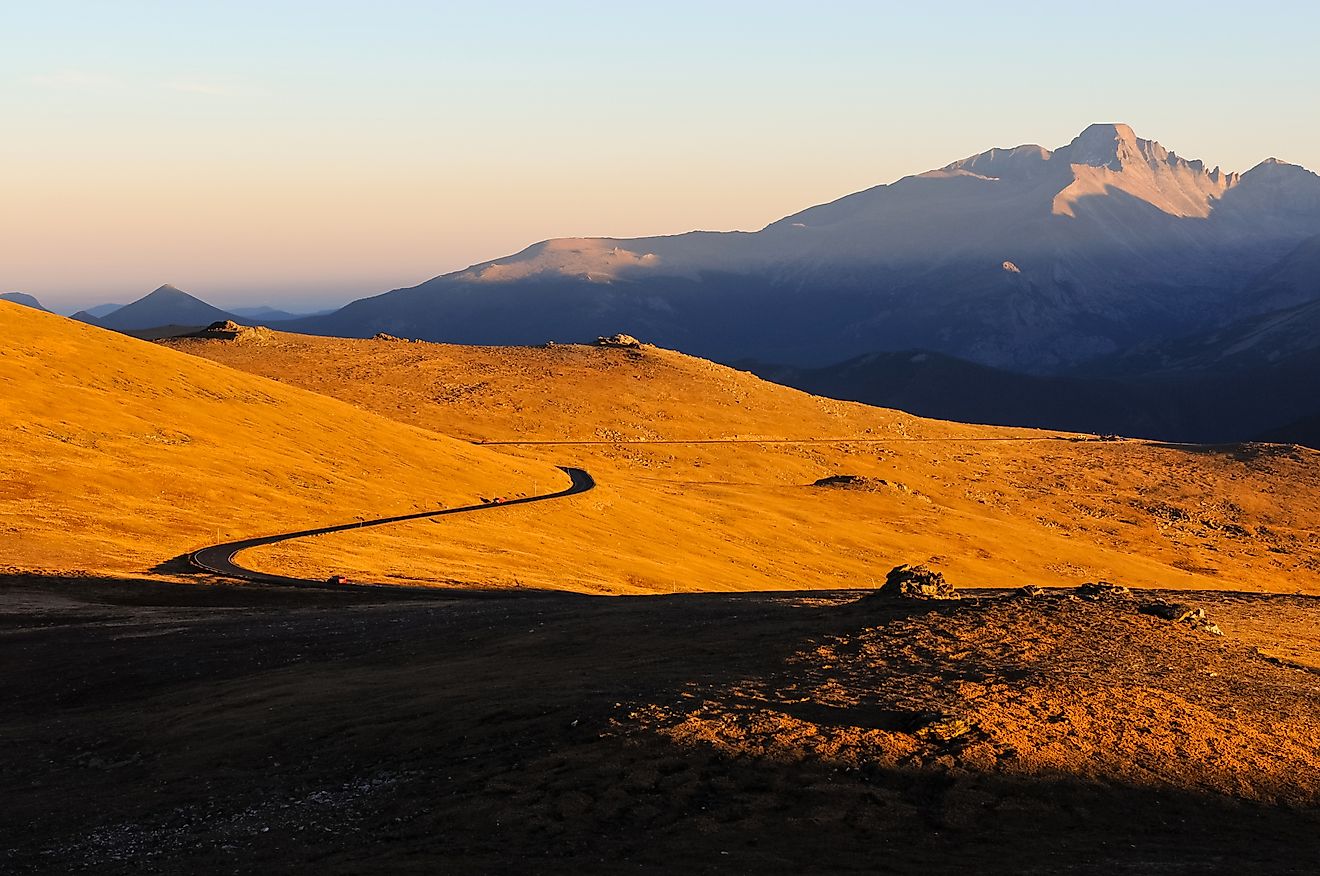Trail Ridge Road, Colorado - Unique Places around the World

5. Description
Trail Ridge Road is a portion of Highway 34 that crosses Rocky Mountain National Park in Colorado. The stretch of road is about 48 miles in length, and the average drive across it will take about two hours of drivers' time. Here, the wonders of the Colorado mountain scenery and its wildlife become a part of the drive. The journey climbs up to an elevation of 12,183 feet at its highest point, and is therefore considered to be the highest stretch of highway in the US. Trail Ridge Road has an alpine tundra environment. It opens in May on Memorial Day weekend and closes after Columbus Day in October, with snowfall dictating it having an opening and closing season.
4. Tourism
Trail Ridge Road is popular as a summertime scenic drive that goes through the Rocky Mountain National Park, which itself is open year-round. Tourists who enjoy outdoor activities in the park use the road to get to the many different campgrounds and trails in the area. The average tourist who just wants to experience a drive on the Trail Ridge Road can hire a rental car at Denver International Airport, or ride a park shuttle that goes to the Estes Park, Colorado, the town hosting the headquarters of Rocky Mountain National Park. An Amtrak train is another option, as one makes a stop nearby from Denver, whereas rental cars are also available to drive up to the mountain road.
3. Uniqueness
Around 10,000 years ago, the Arapahoe and Ute Indians used passages in the area to cross over to their new homes in the west from their ancient hunting grounds in the east. Today, the park still offers tourists the chance to cross over into a new realm of natural wonders by way of the Trail Ridge Road drive. The drive has many turnouts and rest places along the way, many of which offer fantastic mountain views. A stop at the Alpine Visitor Center at an altitude of 11,800 feet is almost mandatory, and from there travelers can enjoy a great view of the Great Plains to the east and Wyoming to the north. The rest of the Rockies can be viewed from the south and west. The temperatures along the higher stretches of the road are 20-30 degrees colder than they are in Grand Lake below it, and it is often quite windy.
2. Habitat
Driving through the Trail Ridge Road, those tourists with keen eyes can get a preview of some of the animal life inside the park while still in their cars. Animals that drivers might see along the ground include deer, elk, coyotes, and marmots, while eagles and hawks may be seen soaring the skies overhead in search of ground prey. Smaller birds will be spotted more often along the stretches of road sitting at lower altitudes, while less often mountain lions and black bears can also sometimes be seen crossing the road. Plant life along and proximate to the road are mostly taller varieties of conifers, especially western species of pines. In the fall, Aspen trees make dazzling shows as their foliage turns various shades of yellow, orange, and red along many areas of the highway in the fall. Wildflowers, most notably Columbines and Indian Paintbrushes, also add color to enhance the beauty of the surrounding meadows.
1. Threats
Despite their majesty, the Rocky Mountain National Park and the Trail Ridge Road can proffer many dangers unto careless tourists. The altitude requires acclimatization to the thin air, without which can result in altitude sickness that at times will affect one's ability to go about driving the road safely. The sporadic weather can turn from pleasant to nasty in a matter of a few minutes there as well. Wildlife should not be fed, as they can become overly aggressive or friendly, placing them and visitors alike at risk. Travelers should drink bottled water only and not from the stream waters, as these may contain contaminants and bacteria. There are many snowfields that may lead to avalanches, especially towards the extreme ends of the open season. Conversely, one should take care to not step on the mountain meadows, the vegetation upon which may take decades to be reestablished and prosper following damage. Instead, those venturing from the road should stick to using the designated trails. Tourists should only take out what they take in, and not disturb the environ by snatching flora and fauna as free (stolen) keepsakes. Each of these precautionary measures are integral to the park's conservation efforts, which are ultimately intended to keep the park safe and beautiful for human visitors and the native wilds alike.











